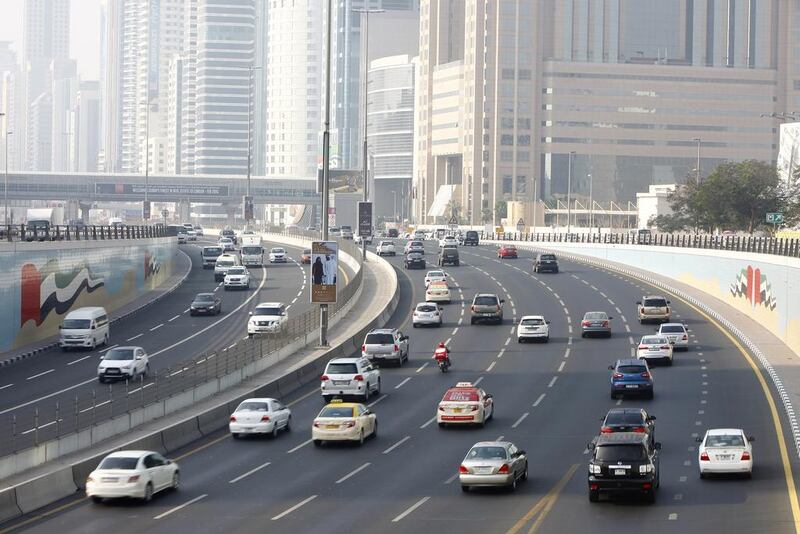ABU DHABI // The UAE released 199.65 million tonnes of carbon dioxide and other greenhouse gases in 2013, the Ministry of Energy announced on Wednesday.
Electricity and water generation accounted for the bulk of emissions, at 33 per cent, or 64.89 million tonnes of greenhouse gases.
Road transport had the second-largest impact, with 44.25 million tonnes, accounting for 22 per cent of emissions. The oil and gas sector contributed 15 per cent of the UAE’s emissions, releasing 29.6 million tonnes.
The new data is consistent with previous reports that show that while the country’s overall contribution to climate change is insignificant, it has a high per capita rate.
Data by the World Resources Institute for 2011 lists Canada as the world’s largest per capita emitter of greenhouse gases, with 25 tonnes per person. The United States was at just under 20 tonnes per person, while the global average in 2011 was nearly 7 tonnes per person.
Besides carbon dioxide, which is the most common greenhouse gas released by human activities, the report measures several other gases that have a similar impact on climate, including methane and nitrogen oxides. The ministry followed international guidelines, established by the Intergovernmental Panel on Climate Change, a United Nations organisation that assesses the issue in scientific terms.
According to the report, cement and aluminium production were each responsible for 8 per cent of emissions in 2013, waste contributed to 6 per cent of emissions and the agriculture sector 1 per cent.
Collectively, the sectors mentioned above caused 93 per cent of UAE emissions. The country’s per capita greenhouse gas emissions stood at 24.16 tonnes.
Dr Matar Al Neyadi, undersecretary at the ministry, said that while the UAE was not committing to targets for the reduction of emissions, initiatives to push energy efficiency and diversify the country’s energy supply would have this effect.
The draft legislation on energy efficiency has been shared with utility companies and other stakeholders and the ministry is awaiting their feedback before presenting the draft to the Cabinet, Dr Al Neyadi said.
The efficiency draft is likely to continue the work already done by other government departments, such as an effort by Emirates Authority for Standardisation and Metrology to regulate the standards for air-conditioning equipment and lighting in the country, he said.
“A remarkable initiative has been done by Emirates Authority for Standardisation and Metrology, especially for air-conditioning and we need to take this a step further,” he said.
The ministry is also working on an energy strategy, which will have targets for energy diversification away from fossil fuels and for energy efficiency, said Fatima Al Foora, assistant undersecretary of electricity. “With these targets we will be able to know how much carbon emissions will be reduced,” she said.
The data released by the ministry yesterday did not highlight the greenhouse contributions of different emirates and did not show the historic trend in UAE emissions.
The UAE is obliged to report its emissions to the United Nations Framework Convention on Climate Change, although, as a developing country, it is under no legal obligation to take measures to reduce carbon-dioxide pollution.
vtodorova@thenational.ae





